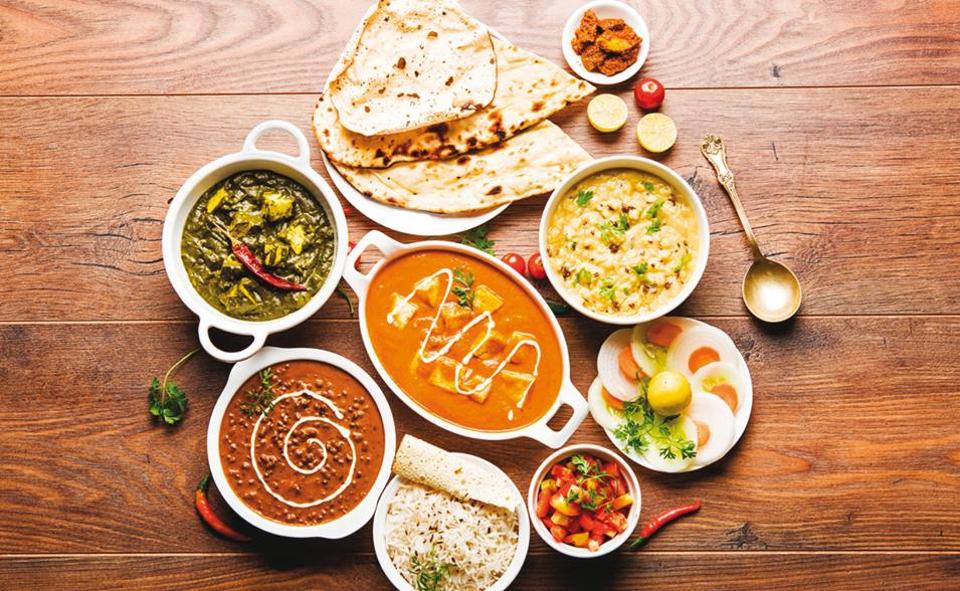Mughlai meals have a record of over 500 years of delicious dishes. When Babur came to India, he became curious about the United States cuisine and the many spices available.
 In India, he started to improvise dishes. Hitherto, he turned into ingesting log-cooked hen and meat, particularly the “rain” or hind leg. His son Humayun did the same, and Mughlai meals were organized inside the royal kitchen. Akbar improvised further after his full-size conquests. More varieties have been to be had due to the addition of goat’s meat, hardly ever to be had in international locations like Persia and Afghanistan.
In India, he started to improvise dishes. Hitherto, he turned into ingesting log-cooked hen and meat, particularly the “rain” or hind leg. His son Humayun did the same, and Mughlai meals were organized inside the royal kitchen. Akbar improvised further after his full-size conquests. More varieties have been to be had due to the addition of goat’s meat, hardly ever to be had in international locations like Persia and Afghanistan.
Akbar became a frugal eater and preferred to eat by himself. But his son Jahangir became fond of eating and consuming. Noor Jehan took command of the empire and made decisions on all crucial matters of the State. The emperor appeared to experience it as he determined more time for indulging in lavish feasts. More and more dishes have been delivered to the Mughal Dastarkhuan, or meal unfold. However, it was not as though he had departed State topics and allowed the kingdom to be run most effectively using the queen.
The verse he coined in her honor was a piece of an exaggeration, although there’s no doubt that he changed into a gourmandizer. Even so, he becomes quite involved in governance. Now, he would overrule his beloved consort what Jahangir did change for the better with the aid of Shahjahan, the finest of the Mughals, in pomp and show. His menu was an enlargement of that devised by his father and grandfather. In this, he becomes aided by his daughters, Jahanara and Roshanara, after the demise of his chief queen, Mumtaz Mahal, who otherwise used to order the royal dishes to be served daily.
Instructions would take delivery of the Agra Fort (the Red Fort came up after her death) to the Mir Bakawal and passed on to the Khansamah and further to the assistant Bawarchi or cook. The daughters later took her vicinity, helped by using the inheritor, Dara Shikon. His brothers, Shah Shuja and Murad have been exquisite connoisseurs of food, but Aurangzeb becomes spartan in his conduct, which had also been meditated within the meals he ate. He informed a journeying hakim from Turkey that Mughal cuisine mixed the pleasure of heaven and hell since it was delicious and smelly at the same time.
Though what passes off as Mughlai food nowadays is not the stuff that the extremely good Mughals ate, it nonetheless maintains a subculture of several centuries, for the duration of which a big assortment of dishes was brought. During the reign of Jahandar Shah (1712), Mughlai food went out of the confines of the Red Fort, for he had married a dancing woman of the Walled City, Lal Kunwar, whose relations and friends all got here to know of Mughlai recipes. That changed five years after the loss of life of Aurangzeb, who had popularized Delhi non-vegetarian meals inside the Deccan.
Mohammad Shah Rangila, the colorful emperor (1719-forty eight), became an exquisite food connoisseur who improvised probably more than all the sooner Mughals. Even his modest food had been matching for kings and princes. After Mohammad Shah, Ahmad Shah, and Shah Alam stored up the way of life, they were no great connoisseurs. Akbar Shah II, who succeeded Shah Alam, did not have to manipulate the whole u. S, who had come below the British and his food, pondered his decreased repute.
His son, Bahadur Shah Zafar, the ultimate of the Mughal emperors, was fond of deer meat as he was fond of searching in his younger days. Still, he also appreciated lighter meals, especially moong-ki-daal, which got here to be called Badshah Pasand, while Malka masoor was named after Queen Victoria. The Mughlai eaten within the Red Fort turned into often roasted stuff. Tandoori Murgh (they did no longer like the chook!) served as the main direction, Murgh Mussalam for those in want of an elixir, roasted “rain,” mince of numerous kinds, Rogan josh, pasanda, kofta Nargis, liver, the heart of a lamb, menu or lamb’s haunches, korma, kababs from many types, along with the chappal kababs, bhuna gosht, full roasted ram, fish curries, fried river fish and unique salads, all washed down with wines from Portugal and Spain, especially the wine of Oporto, in the case of these Mughals who drank (not all did).
A notable delicacy changed into venison and the flesh of some of the birds like duck, partridge, pigeons and bater, Chidi pulao from sparrows, Kaaz kulang and other birds, together with the migratory ones, eaten with naan, sheermal with chappati (they didn’t name it room roti). Desserts comprised fruit and candies, halwas, and kheers. The prince in charge of meal distribution to the royal inmates became Mirza Chappati at some stage in the “mutiny” days, even though his actual name was Mirza Fakru. Now, except for the five celebrity inns, Mughlai meals have been popularised via Karim’s and others, including such retailers as Al Kausar, which serves arrangements with mystery recipes left behind via Nabbu Mian in ohe late nineteenth century. Jama Masjid, Ballimaran, Mehrauli, Nizamuddin, and Bara Hindu Rao are a few locations with favorite food joints. So, Mughlai food continues to tickle the taste buds even in the 21st century.


